Marukin Two-Piece Cap Fountain Pen c. 1930s
by Jim Mamoulides, December 15, 2023
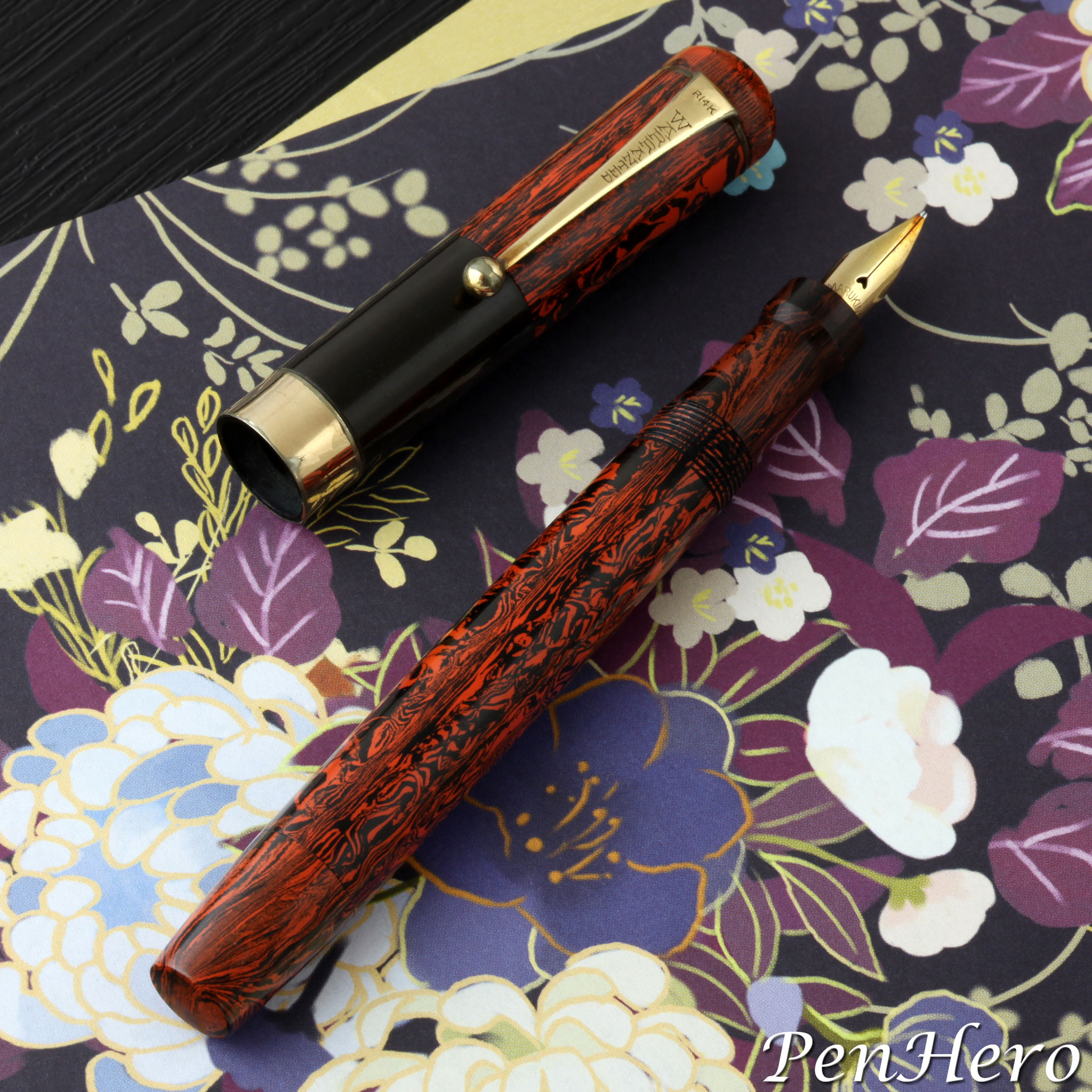 Marukin two-piece cap fountain pen c. 1930s
Marukin two-piece cap fountain pen c. 1930s
Black and Red
This is a Marukin mottled red hard rubber eyedropper pen with a shut off valve made in the 1930s. It operates as many other Japanese eyedropper pens by removing the nib section, filling the barrel with ink, putting the section back on, and then slightly opening the end cap to allow ink flow to the nib in order to write.
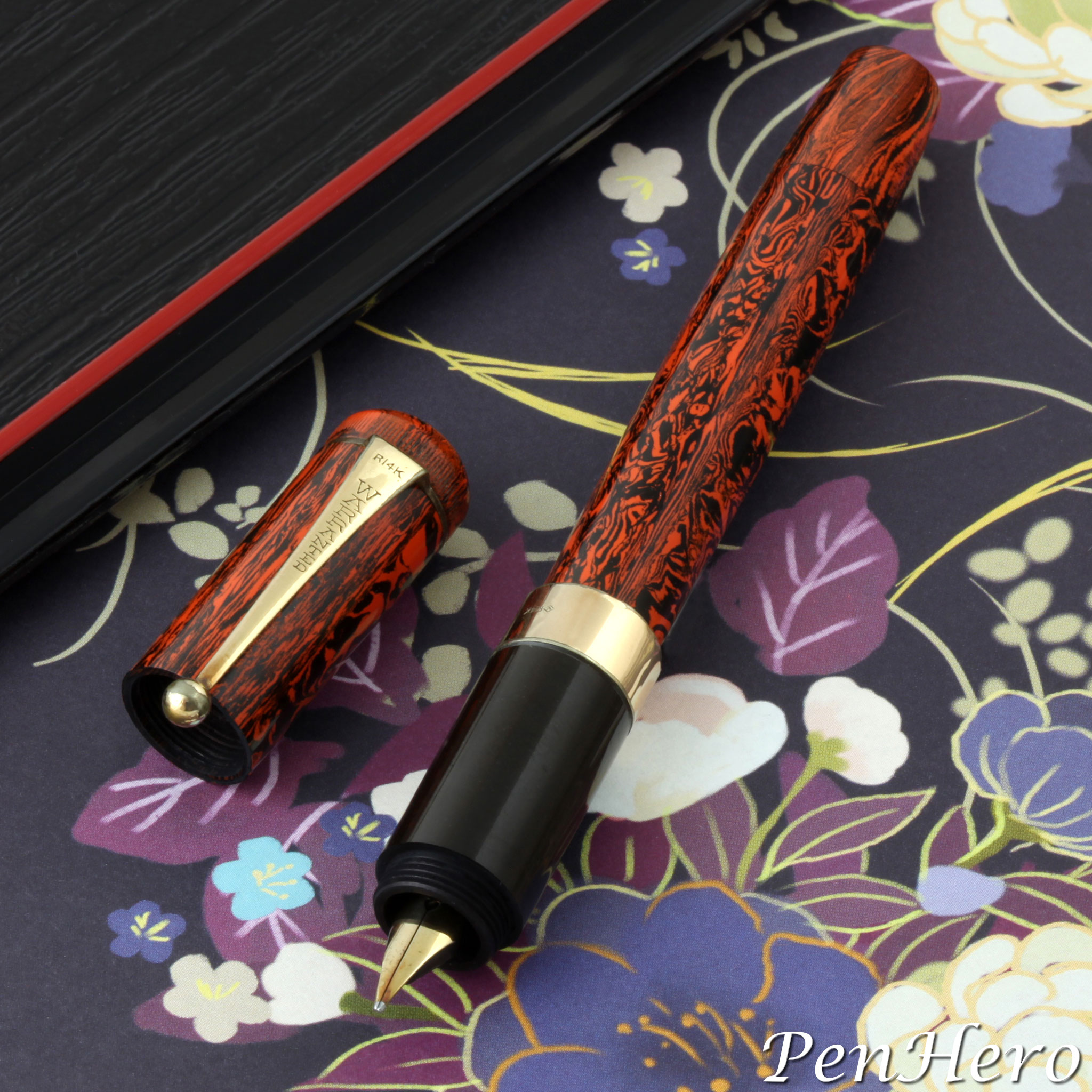 Marukin two-piece cap fountain pen c. 1930s
Marukin two-piece cap fountain pen c. 1930s
What makes this pen stand out is the very unusual two piece cap. The cap can be removed as a single two piece unit as would normally be expected. The user could also separately unscrew and remove only the top mottled red hard rubber section of the cap, with the WARRANTED stamped clip, so the pen could be held using the black ebonite part of the cap as a wide grip. It’s not clear that this was the intended purpose of the two piece cap, but the black hard rubber bottom section can function in that way if a wide grip is desired by the user. The Marukin nib is incredibly flexible and was installed very deep in the section so only the long tines show when only the cap top is removed. It's also entirely possible that the contrasting black serves only as a decorative element. We have never seen another one like it!
Marukin - A Mystery
Marukin was a Japanese maker of high quality fountain pens and may have only operated in the 1930s. During that time there were hundreds of small, often mom and pop, shops making pens in Osaka and Tokyo. Many of these shops would make and decorate their own caps and barrels and would purchase the rest of the pen parts from specialty parts houses and nib makers.
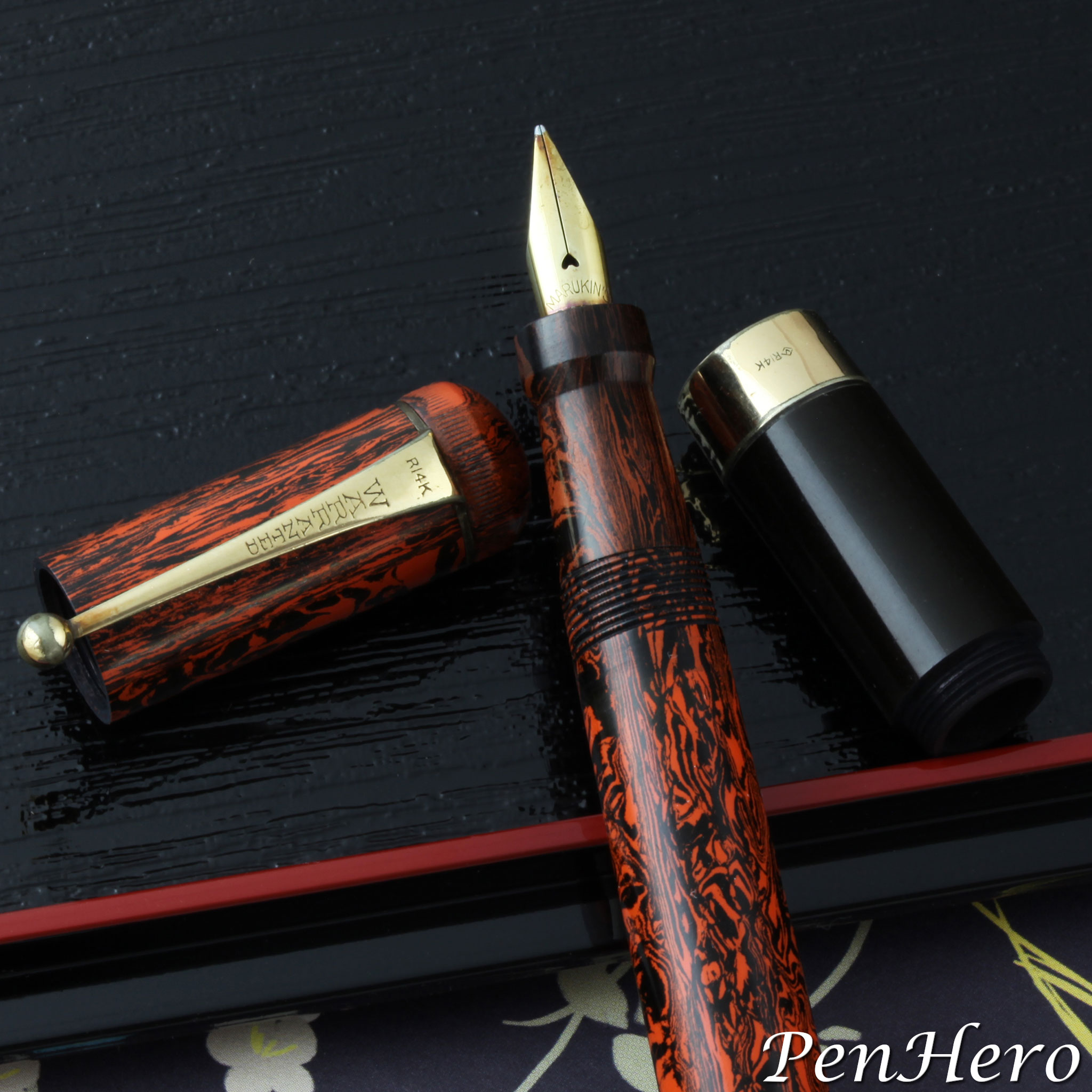 Marukin two-piece cap fountain pen c. 1930s
Marukin two-piece cap fountain pen c. 1930s
Not a lot is known of the history of Marukin pens. There is very limited information in English in print or on the internet. Marukin is not mentioned in Fountain Pens of Japan, for example. According to the Winter 2006 Pennant article, “Collecting Japanese Pens,” by Stan Klemanowicz, Marukin pens are somewhat rare and were made by Kinichiro Kasahara. The size of the Marukin company is not known. Research by Chris Nippert through his review of Japanese websites and his network with Japanese collectors indicates that Marukin was “a luxury boutique pen manufacturer in the 1930’s, based in Osaka. They were known for producing extremely high-quality ebonite. Most of their pens … feature slightly thicker barrels.” Chris' research indicates that Kinichiro Kasahara was also the founder of the company.
Marukin Soy Sauce?
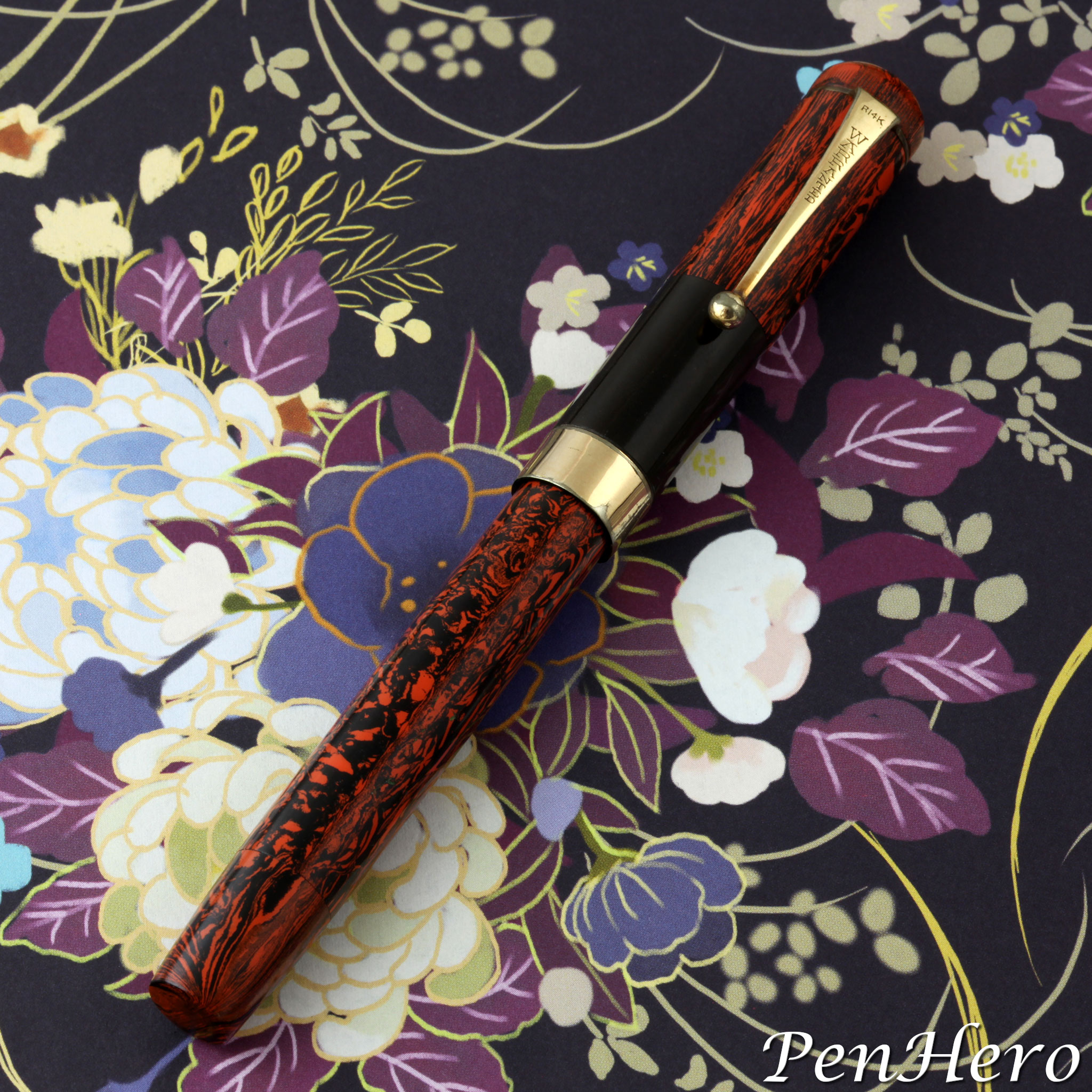 Marukin two-piece cap fountain pen c. 1930s
Marukin two-piece cap fountain pen c. 1930s
In researching the article I stumbled on the present day soy sauce brand Marukin, one of the top brands in Japan. The Marukin food company logo is a near match with the logo on Marukin pen boxes. Marukin Shoyu Company was founded in 1907, a merger of soy sauce makers on Shōdoshima, or Shodo Island, where the product had been made since about the year 1600. Shōdoshima means "Island of Small Beans," so no surprise that a soy sauce industry started there. Was Kinichiro Kasahara somehow connected with Marukin Shoyu Company? There is no evidence of that. Shodo Island is closer to Okayama than Osaka, so the connection to the Marukin pen company may be in name only. For now, I'll call this an interesting coincidence.
Beautiful Materials and Craftsmanship
In Japan, as in the United States, the most common early fountain pens were mostly made of black hard rubber. When colorful hard rubber rods were introduced, some Japanese pen companies began using them, though this appears to be later than their American counterparts. Japanese pen companies would often put a single coat of urushi lacquer on the finished hard rubber surface to protect it.
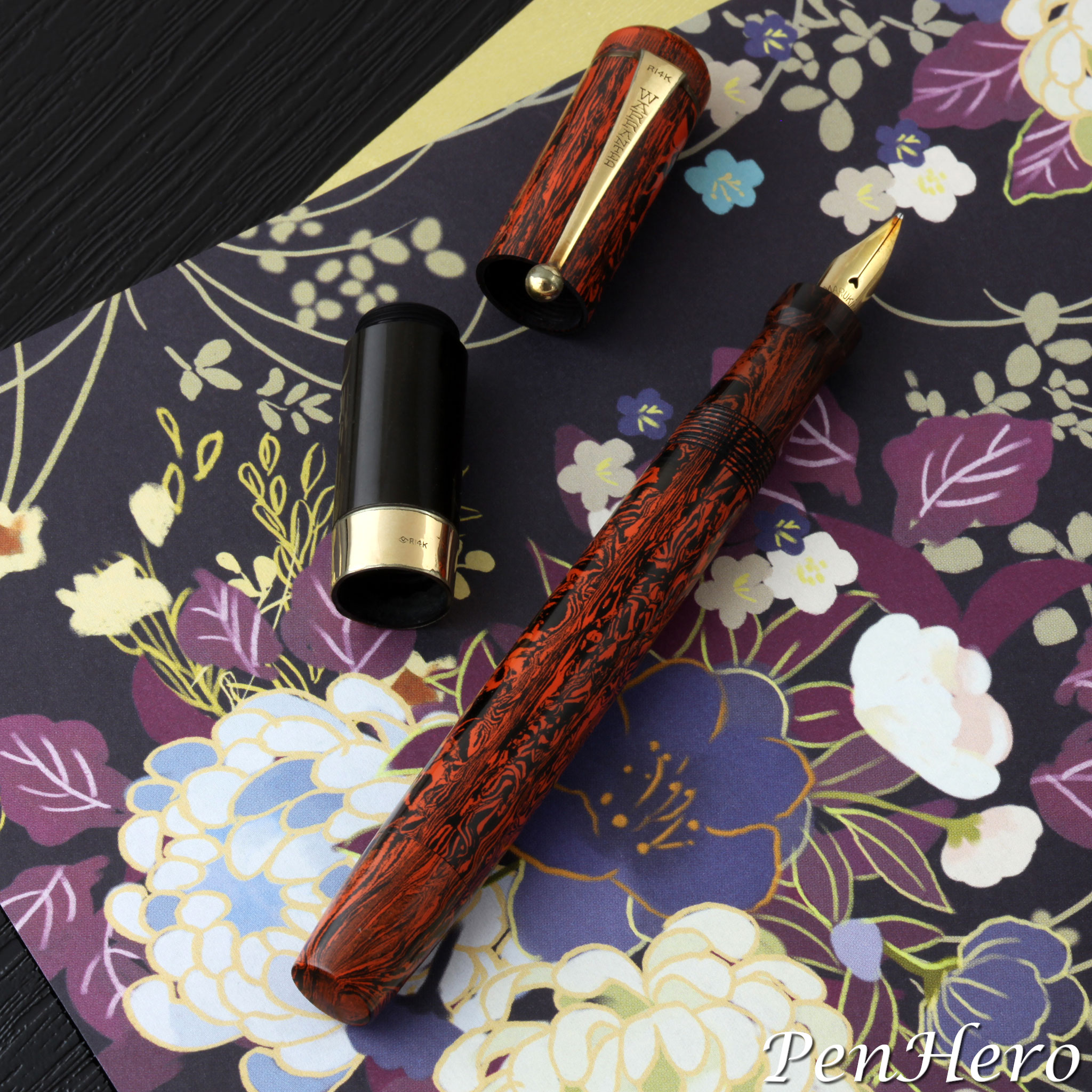 Marukin two-piece cap fountain pen c. 1930s
Marukin two-piece cap fountain pen c. 1930s
Marukin either made their own nibs or had them specially made with their company information stamped on them, a very uncommon practice in the 1930s and likely more costly to the pen maker. This pen has a 14 karat gold nib stamped MARUKIN’S GOLD PEN with the Marukin logo. The clip and cap band, as was common with many 1930s era Japanese pen makers, are unbranded and probably sourced from a local pen parts company, with only R14K markings to indicate that they are 14 karat rolled gold. The clip has the additional stamping WARRANTED.
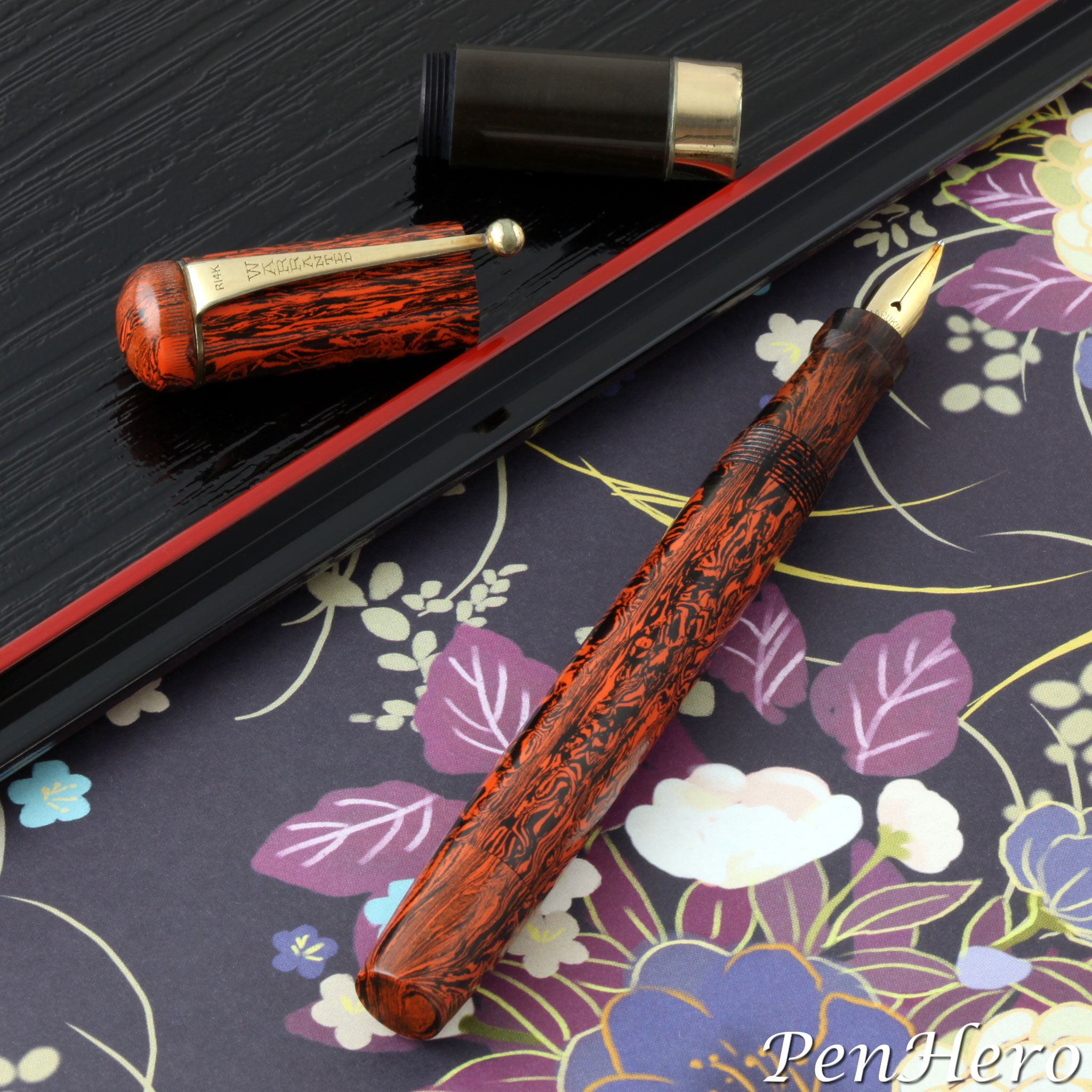 Marukin two-piece cap fountain pen c. 1930s
Marukin two-piece cap fountain pen c. 1930s
It’s an eyedropper pen with a safety shut-off valve at the end of the barrel. It fills by unscrewing and removing the nib section and dripping ink into the barrel using a long eyedropper. The knob at the end of the barrel is attached to a long rod that extends inside the barrel up to the base of the feed in the nib section. When the knob is screwed flush with the end of the barrel, the tip of the rod cuts off ink flow to the feed, making it an ink shut off valve. The knob must be unscrewed slightly to allow ink to flow to the nib so the user can write.
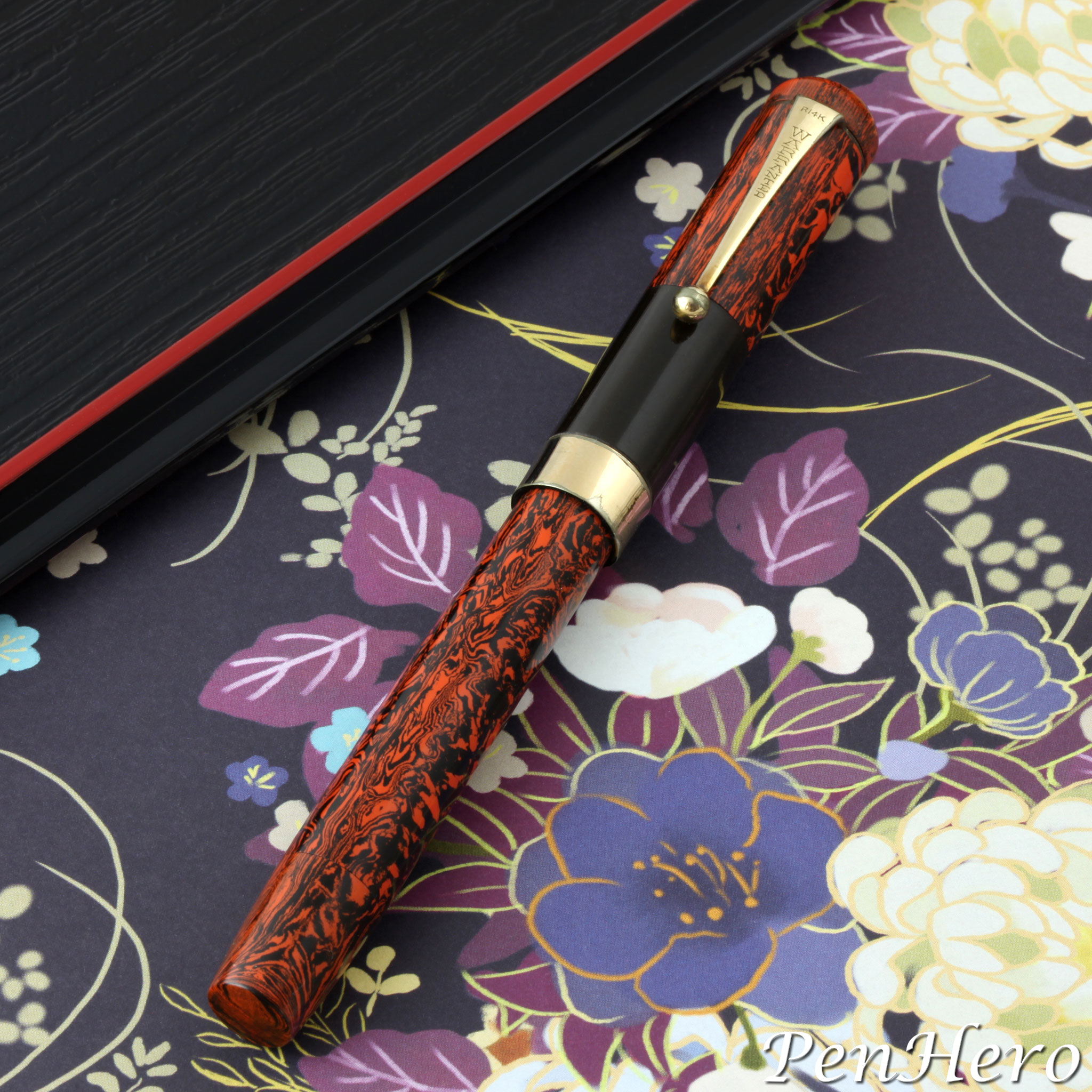 Marukin two-piece cap fountain pen c. 1930s
Marukin two-piece cap fountain pen c. 1930s
As there is no information on this particular pen model, there will not be an identification guide. Also, the pen was loaned for photos and not used, so there will not be a performance section. If the reader has more information on Marukin it would be appreciated.
Marukin fountain pens are excellent examples of high quality Japanese pens from the 1930s. They are very uncommon in the United States and very little has been written about them in English.
This Marukin pen is exceptionally well made. The hard rubber pattern on the cap top, top cap section, cap, barrel, plunger knob and grip section is very vivid and well matched. The contrasting black lower cap and wide cap band makes the pen true eye candy. Because the pen was sent for photos for an article I did not fill or write with it. I can say it would make a showpiece for any collection of Japanese fountain pens.
Acknowledgements
Thanks to Stan Klemanowicz for loaning this pen for photographs. Thanks to Chris Nippert for providing additional information and translation of Marukin materials.
References
“Collecting Japanese Pens” by Stan Klemanowicz, The Pennant, Winter 2006
Fountain Pens of Japan by Andreas Lambrou and Masamichi Sunami, © 2012 Andreas Lambrou Publishers, Epping, Essex, United Kingdom
"Marukin" Company Web Page, Copyright © Morita Co., Ltd.
Interact
Comments on this article may be sent to the author, Jim Mamoulides


